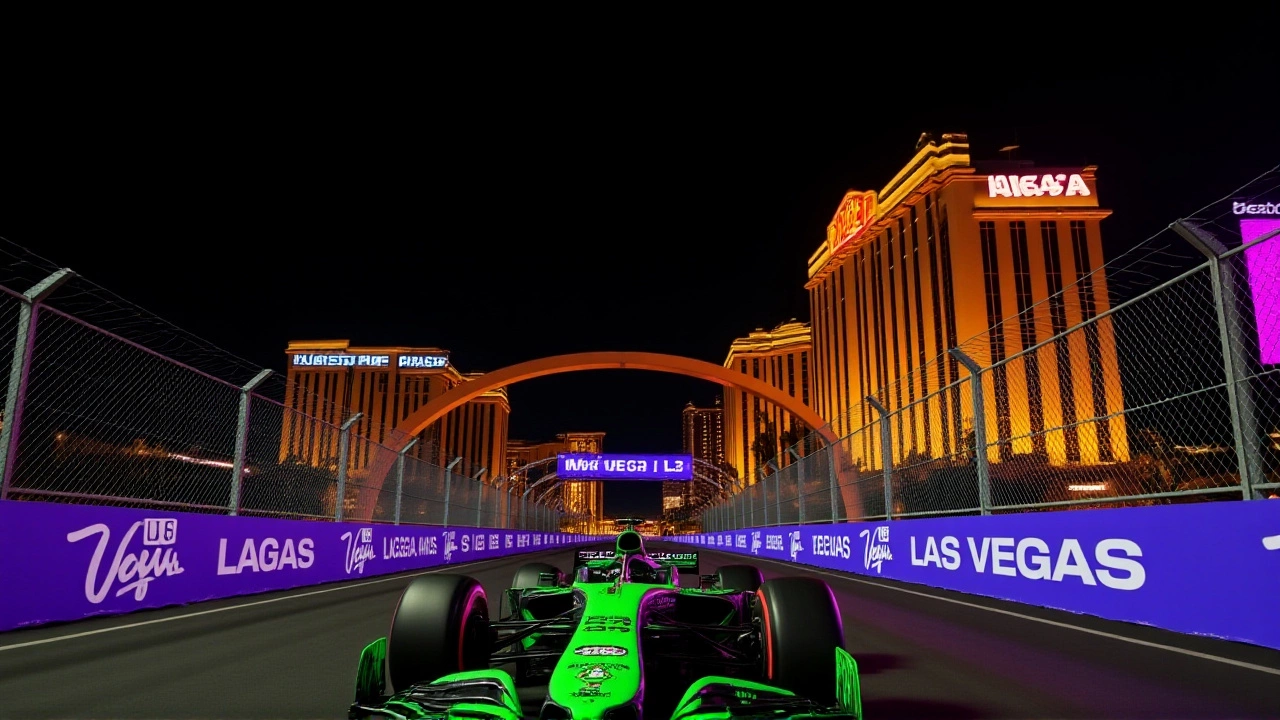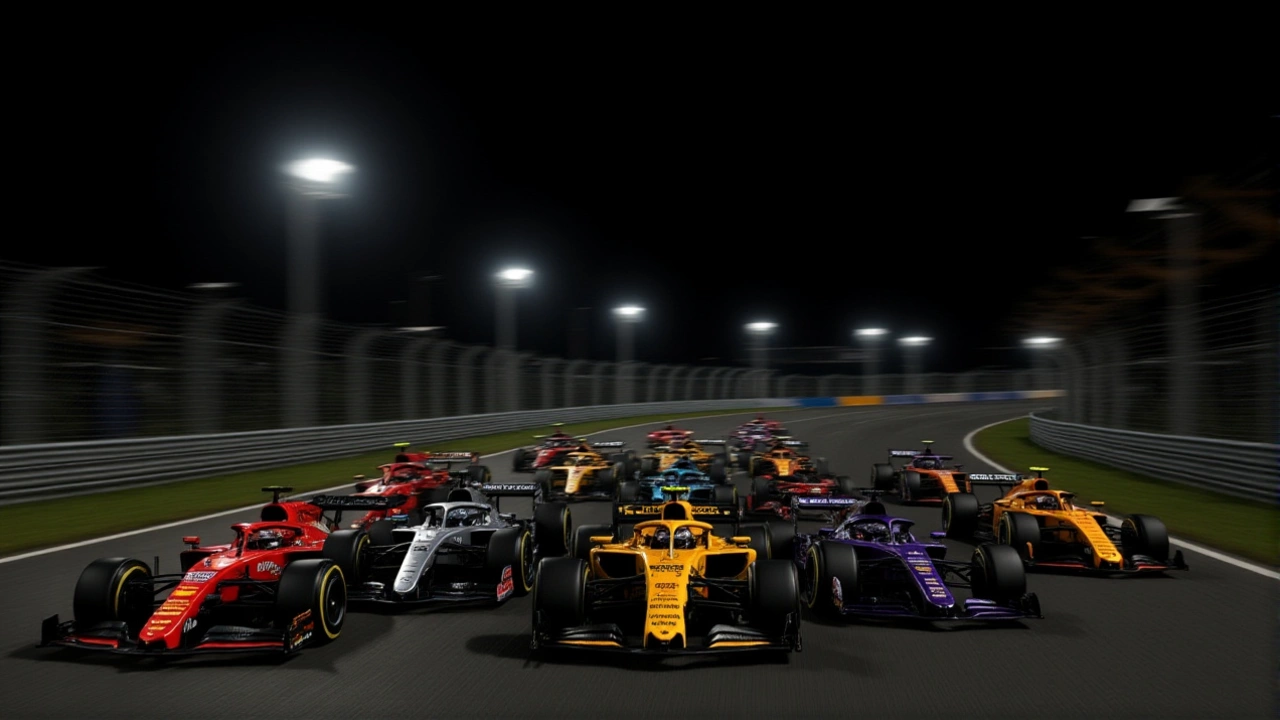When the 2025 Formula 1 Las Vegas Grand Prix was first scheduled to roll into town in 2023, organizers dreamed of neon-lit nights and dry asphalt. Instead, on Friday, November 21, 2025, drivers braked through standing water on the Las Vegas Strip, the track slick with oil, rubber, and debris from thousands of daily cars—conditions described by Pirelli’s chief Mario Isola as F1’s “worst ever.” The storm that hit Las Vegas didn’t just rain—it dumped nearly 1.6 inches in just over a week, nearly 40% of the city’s entire annual average. And for one hour on Tuesday, November 19, it dropped 10% of that total. The result? Flash floods swallowing parking lots, evacuating basement staff at The LINQ Hotel and Casino, and turning what should’ve been a spectacle of speed into a survival test.
When the Desert Flooded
Las Vegas doesn’t do rain. Not like this. The city’s annual average? Just 4.18 inches. By Friday, November 21, 2025, it had already received 1.58 inches—more than in most entire years. The deluge began Saturday, November 15, when a stalled Pacific storm system slammed into the Southwest, dumping torrential rain over the Mojave Desert. By Tuesday, November 19, the Las Vegas Strip was underwater. Footage posted to Instagram by user @foxyfeline99 showed water rushing through the underground parking garage of The LINQ Hotel and Casino, swirling around luxury sedans and emergency exits. Workers in subterranean areas were evacuated. Drainage tunnels, designed for desert runoff, couldn’t keep up. The city’s infrastructure, built for drought, buckled under the weight of a single storm.
Formula 1’s Nightmare on the Strip
For the first time since the race joined the calendar in 2023, wet conditions struck during race weekend. Friday’s third practice and qualifying sessions were run in chilling November air—temperatures barely hitting 56°F—on a surface that Pirelli’s Mario Isola described as “greasy.” “We know the track is open every day,” he said on Thursday, November 20. “There’s no reset. It’s like racing on a highway after a rainstorm.” Unlike Monaco or Singapore, where the circuit closes between sessions, Las Vegas remains a functioning city. Thousands of cars roll over the track daily, leaving behind a film of oil and brake dust. When rain hits, it becomes a skating rink. Drivers reported losing grip mid-corner. One, who spoke anonymously, said, “I’ve driven in monsoon conditions in Malaysia. This was worse. The car just didn’t want to stick.”
Weather Forecasts and Race Timing
The race organizers had planned carefully. The main event was set for 8:00 p.m. local time—two hours earlier than the midnight starts of 2023 and 2024—to avoid the heaviest precipitation windows. But even with that, Free Practice 1 on Friday carried a 30% chance of showers. The National Weather Service kept its major flood warning active until Wednesday morning, November 26, just hours before media day. By Saturday, November 22, the storm had moved east, but saturated soil meant minor ponding lingered in low-lying zones like the convention center district and near the Las Vegas Creek. KSNV, the local NBC affiliate, reported that while temperatures rebounded to the mid-60s by Sunday, November 23, the ground remained soggy. “It’s not about the rain anymore,” said meteorologist Lena Ruiz on News3LV. “It’s about what happens when the sun comes out and the water has nowhere to go.”

Who’s Affected—and How
The impact stretched far beyond the track. Hotel shuttles slowed to a crawl. Taxis took twice as long. Visitors were warned to avoid underground entrances at Caesars, Mandalay Bay, and The LINQ. Camera operators were advised to cover gear with plastic, carry quick-dry towels, and bring lightweight tripods for low-light shots during twilight sessions. Pirelli even issued special tire pressure guidelines for the wet conditions. “We’re running higher pressures than normal,” Isola confirmed. “Less contact area means less chance of aquaplaning.”
For locals, it was a wake-up call. Las Vegas has spent decades building in floodplains, assuming the desert would stay dry. But climate models show the Southwest is becoming wetter in bursts—long dry spells followed by extreme downpours. The city’s storm drains, many dating to the 1970s, weren’t designed for this. “We’re not talking about a few puddles,” said Dr. Raj Patel, a hydrologist at the University of Nevada, Las Vegas. “We’re talking about infrastructure that’s failing under 21st-century weather patterns. And this isn’t a one-off.”
What Comes Next?
While the Grand Prix concluded without major incident—dry skies held for Sunday’s race—the forecast beyond November 27, Thanksgiving, was unsettling. Meteorologists from KYMA and News3LV pointed to a second storm system potentially arriving the following weekend: November 29–30, 2025. That’s just days after the race, when tens of thousands of visitors are still leaving town. If it hits, it could mean more flooding, more delays, and more questions about whether Las Vegas can sustain a Formula 1 event in an era of climate volatility.

Why This Matters
The Las Vegas Grand Prix was supposed to be a symbol of the city’s evolution—glamorous, high-tech, global. But the 2025 race exposed its fragility. It’s not just about tires or track grip. It’s about whether a city built on illusion can adapt to reality. If the Strip floods again next year, will Formula 1 return? Will fans still come? And more importantly, will the city fix its drains before the next storm?
Frequently Asked Questions
Why is the Las Vegas street circuit so dangerous in the rain?
Unlike closed circuits, Las Vegas remains an active city with thousands of daily vehicles. Oil, brake dust, and rubber buildup coat the asphalt, creating a slick film that becomes extremely hazardous when wet. Pirelli’s Mario Isola confirmed the surface was “greasy” even before rain, making grip levels unpredictable and increasing the risk of aquaplaning—especially in low-light conditions during twilight sessions.
How unusual is this level of rainfall for Las Vegas?
Extremely. Las Vegas averages just 4.18 inches of rain annually. By November 21, 2025, the city had received 1.58 inches—nearly 40% of its yearly total—in just six days. One hour on November 19 dumped 10% of the annual average. Such extreme events were rare before 2020; now, climate models show they’re becoming more frequent in the Southwest due to shifting atmospheric patterns.
What happened at The LINQ Hotel during the flood?
Water surged into the underground parking garage and lower-level service tunnels, forcing evacuations of maintenance staff and hotel workers. Cameras captured water rising to knee-height in vehicle bays. Drainage systems, designed for light desert runoff, were overwhelmed. The hotel temporarily shut down access to its lower floors and redirected guests to elevated entrances, a move that disrupted hundreds of event attendees.
Will the Formula 1 race return to Las Vegas in 2026?
Organizers have not canceled the event, and the contract runs through 2030. But the 2025 flood has triggered internal reviews by Formula 1 and the city. If infrastructure upgrades aren’t made—like improved drainage, flood barriers near the Strip, and temporary track sealing between sessions—the race’s future could be in jeopardy. Insurance costs for the event are already rising.
Is another storm expected after the race?
Yes. Meteorologists from KYMA and News3LV warned of a second storm system potentially arriving November 29–30, 2025—just days after the Grand Prix. With soil already saturated, even moderate rain could trigger renewed flooding in low-lying areas like the convention center and Tropicana Avenue. This raises concerns for post-race travelers and local residents alike.
What should visitors do if it rains during the race weekend?
Avoid underground entrances at hotels, especially near The LINQ and Caesars. Allow extra time for shuttles and taxis—they’ll move slower. Carry waterproof covers for electronics and wear non-slip shoes. Monitor local weather alerts via KSNV or the National Weather Service. Even after rain stops, pavement remains slick for hours. Treat sidewalks like ice.

